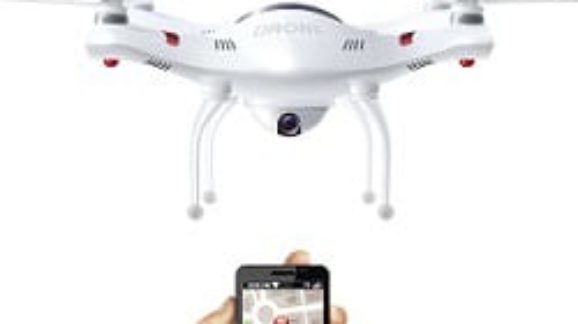Regulatory Waiver Clears the Sky for Private Partnership, Innovation, and Competition

Photo Credit: Getty
Three months have passed since the Federal Aviation Administration (FAA) granted a special waiver to the drone delivery company Zipline International. Early last week, Walmart announced a partnership with Zipline to “launch a first-of-its-kind drone delivery operation in the U.S.” to distribute health and other wellness products.
Some say the move by Walmart is meant to compete with Amazon’s Prime Air delivery drones—something antitrust regulators should keep in mind. But mostly, the news illustrates what is possible when regulatory agencies step out of the way and companies are permitted to innovate. Since COVID-19 will likely be with us for some time, this innovation could have substantial health and economic benefits.
The FAA granted a Part 107 Waiver to Zipline on June 16, 2020, enabling the delivery of medical supplies in the wake of the COVID-19 crisis. As indicated on the Certificate of Waiver, the FAA exempted the company from four regulatory provisions:
- 14 C.F.R. § 107.29 – Daylight operation,
- 14 C.F.R. § 107.31 – Visual line of sight aircraft operation,
- 14 C.F.R. § 107.33(b) and (c)(2) – Visual observer, and
- 14 C.F.R. § 107.35 – Operation of multiple small unmanned aircraft.
These restrictions essentially banned drone deliveries. CEI expressed concern over the FAA’s final rule on the Operation and Certification of Small Unmanned Aircraft Systems in June 2016. Marc Scribner submitted comments on behalf of CEI to the proposed rule in April of 2015, addressing each of the provisions that were ultimately waived for Zipline. In regard to the restrictions on “Visual line of sight aircraft operation” and “Visual observer,” Scribner noted:
This has the effect of prohibiting some of the most promising potential commercial uses of sUAS [small unmanned aircraft systems], such as Amazon’s proposed Prime Air automated parcel delivery service.
Scribner also stressed the importance of allowing companies leeway to further develop and implement technologies for “see-and-avoid” compliance using cameras and sensors. As to the restrictions to daylight hours and against multiple small unmanned aircraft, Scribner commented:
Such automated operations should also not be inhibited by FAA’s proposals to prohibit nighttime operations at 14 C.F.R. § 107.29, and to require one-to-one operator-sUAS operations at 14 C.F.R. § 107.35. In this rapidly evolving space, there is good reason to believe FAA’s fears of permitting unsafe sUAS technology will quickly be shown to be overcautious.
With the advent of COVID-19, private enterprise has grappled with the logistics of maneuvering through a regulatory jungle gym in responding to the public health emergency. Zipline now has at least four fewer hoops to jump through. In anticipation of the waiver, Zipline teamed up with North Carolina health care provider Novant Health last May to deliver personal protective equipment and medical supplies. And the recent partnership with Walmart should prove to be mutually beneficial for both companies as well as for consumers. Both Amazon and UPS recently received Part 135 certification from the FAA under Title 14 of the Code of Federal Regulations for their respective drone programs, Prime Air and Flight Forward. So, customers can and should expect to have choices in the future.
While the Part 107 Waiver granted to Zipline represents a step in the right direction, there remains much room for improvement. The concerns expressed by CEI during the promulgation of the FAA’s regulations under Part 107 are still valid today.